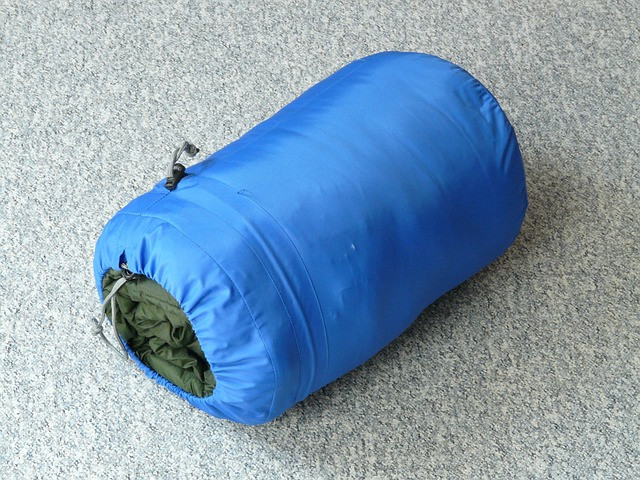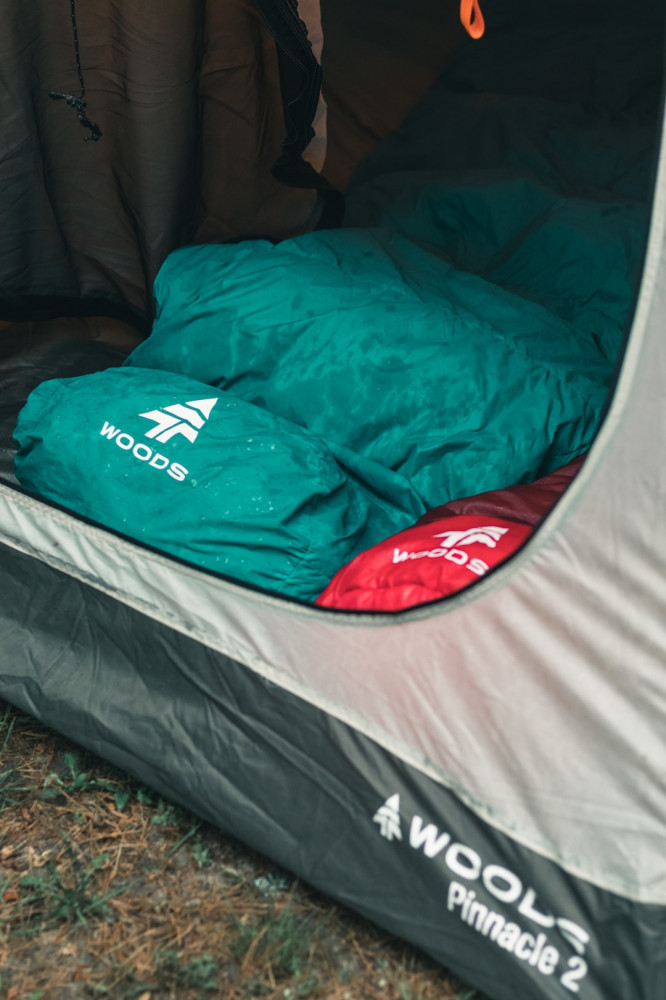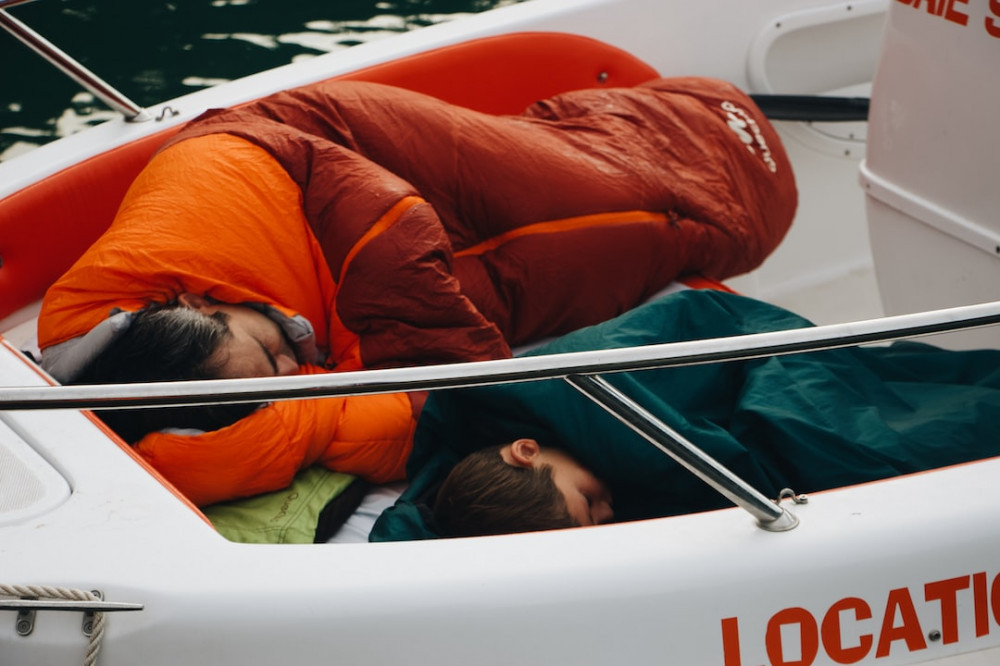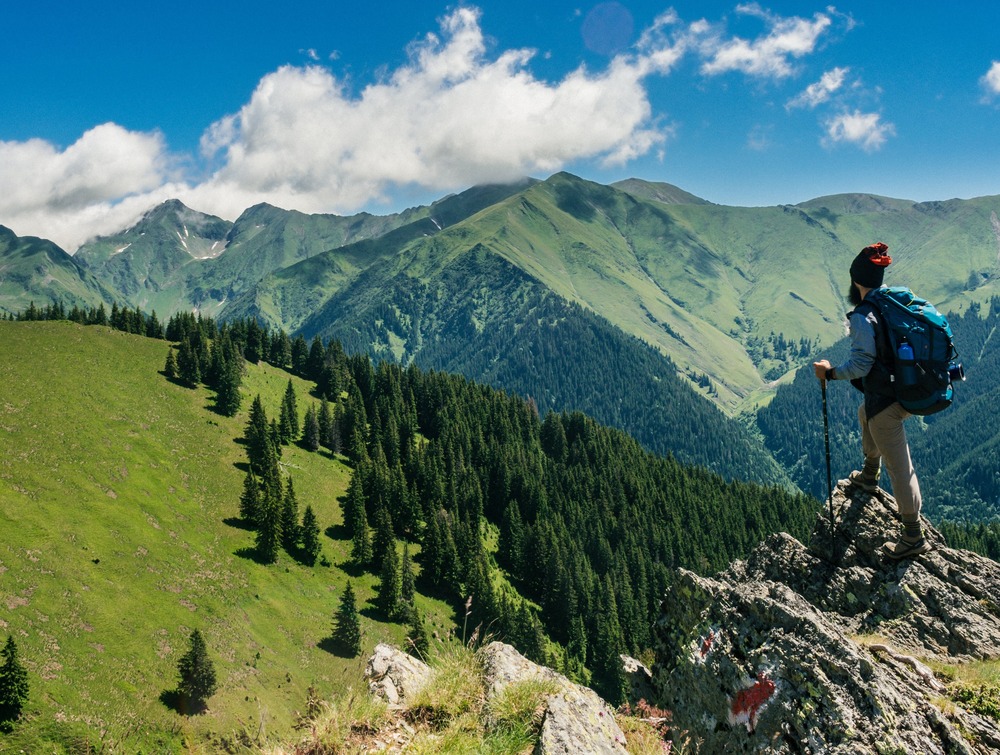When it comes to planning an outdoor adventure, one of the most crucial decisions you’ll make is choosing the right sleeping bag. Whether you’re an avid backpacker, a casual camper, or just planning a weekend getaway in the wilderness, your choice of a sleeping bag can greatly impact your comfort and safety during your outdoor escapade.
In this comprehensive guide, we’ll delve into the various types of sleeping bags available on the market, helping you make an informed decision that suits your needs perfectly. So, Do You Understand Different Types of Sleeping Bags? Let`s get started.
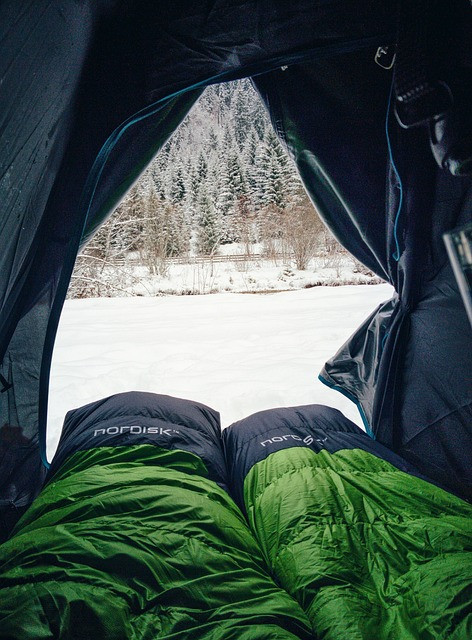
Mummy Sleeping Bags: The Cocoon of Comfort
Mummy sleeping bags are a popular choice for those seeking lightweight and compact options. These bags are designed to snugly fit your body, resembling a cocoon. Their tapered shape minimizes air circulation within the bag, providing excellent insulation. They are ideal for cold weather conditions, keeping you warm and toasty throughout the night. Mummy bags are available in different temperature ratings, so you can choose one that matches the expected climate of your adventure.
Rectangular Sleeping Bags: Roomy Comfort for All Ages
If you value space and freedom of movement, rectangular sleeping bags are your go-to option. These bags offer a more spacious interior, allowing you to stretch your legs and move around comfortably. They are versatile and suitable for various camping scenarios, from family camping trips to summer festivals. While they may not provide the same level of warmth as mummy bags in extreme cold, they are perfect for mild to moderate conditions.
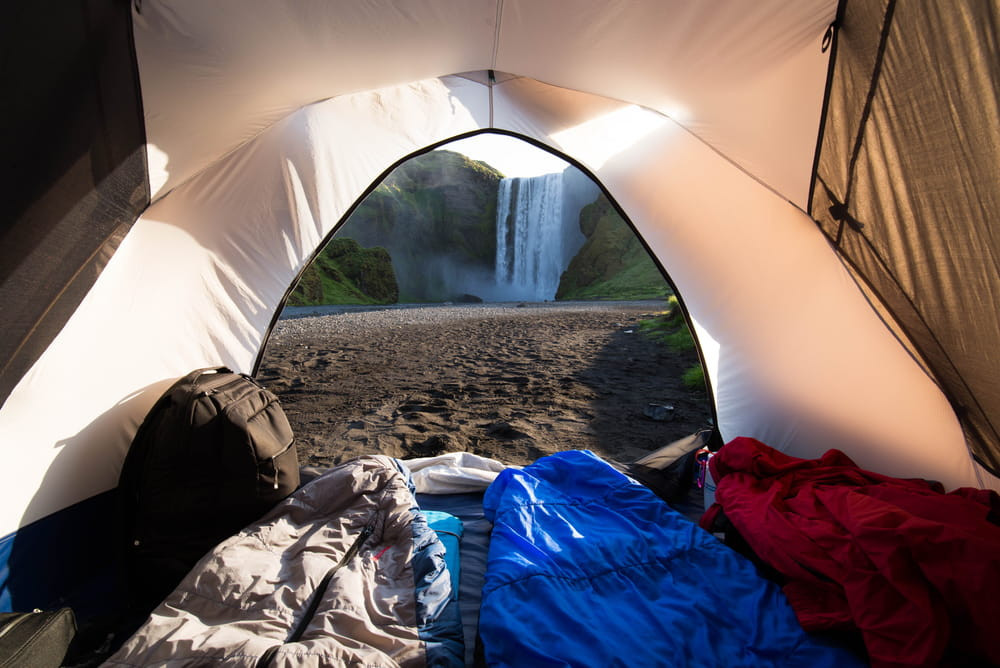
Semi-Rectangular Sleeping Bags: The Best of Both Worlds
Semi-rectangular sleeping bags strike a balance between the snug fit of mummy bags and the roominess of rectangular ones. They offer a bit more space for movement while still retaining some of the warmth-preserving qualities of mummy bags. These bags are versatile and adaptable, making them a great choice for campers who want a compromise between comfort and insulation.
Double Sleeping Bags: Cosy Camping for Two
For couples or those who prefer to share their sleeping space, double sleeping bags are the way to go. These bags are crafted to comfortably fit two individuals. They come in various styles, including rectangular and semi-rectangular, allowing you to choose the configuration that suits you best. Sharing body heat can help keep both campers warm, making double sleeping bags a great option for cold-weather excursions.
Ultralight Sleeping Bags: Featherweight Adventures
If you’re an ultralight backpacker, weight matters. Ultralight sleeping bags are specifically engineered to be as lightweight as possible, making them a top choice for long-distance hikers. These bags are designed with high-quality materials that reduce bulk without sacrificing warmth.
Keep in mind that ultralight sleeping bags are typically best suited for warm-weather camping, as their minimalist design may not provide sufficient insulation in frigid conditions.
3-Season vs. 4-Season Sleeping Bags: Matching the Climate
Understanding the seasons for which your sleeping bag is designed is crucial. 3-season sleeping bags are suitable for spring, summer, and fall camping, offering comfort in a range of temperatures but not built for extreme cold.
On the other hand, 4-season sleeping bags are designed for winter camping, providing the necessary insulation to keep you warm in freezing temperatures. It’s essential to choose the right bag for your adventure season to ensure a comfortable night’s sleep.
Down vs. Synthetic Insulation: The Battle of Warmth
The type of insulation in your sleeping bag plays a significant role in its performance. Down insulation, typically made from duck or goose feathers, is renowned for its exceptional warmth-to-weight ratio.
It’s compressible, making it a great choice for backpackers. Yet, when wet, down loses its ability to insulate, so ensuring it stays dry is crucial.
On the other hand, synthetic insulation is more resistant to moisture, making it suitable for damp conditions. While it may not provide the same level of warmth as down, synthetic bags are more budget-friendly and still perform well in various conditions.
Additional Features: What to Look For
When choosing a sleeping bag, consider additional features that can enhance your camping experience.
Look for features such as:
Hood
The sleeping bag’s hood, commonly found on many models, is designed to offer extra warmth and insulation for the head. Given that a lot of body heat can escape through the head, this hood acts to keep that warmth in, particularly in chillier settings. Pulling the hood tightly around the face helps reduce contact with the cold air, ensuring a warmer sleep.
Moreover, many hoods come with a drawstring or tightening feature, letting users adjust it for a close fit, boosting its ability to insulate. One word of advice, never pull the sleeping bag over your head to create more warmth as this will only create condensation within the bag and make you colder.
Draft Tubes
A draft tube on a sleeping bag is a feature designed to prevent cold air from entering the bag through the zipper. It’s essentially an insulated flap that runs the length of the zipper on the inside of the bag. When the bag is zipped up, the draft tube sits behind the zipper, acting as a barrier to block cold drafts from seeping in and warm air from escaping. This feature is especially important in colder conditions to ensure the sleeper stays warm throughout the night.
Zipper Compatibility
Zipper compatibility refers to the ability of the zippers on two or more sleeping bags to be zipped together, creating a larger combined sleeping area. This feature is especially useful for couples or families who want to sleep close together in the outdoors.
To achieve zipper compatibility, the sleeping bags in question must have zippers of the same type and size, and often, one bag should have a right-hand zipper while the other has a left-hand zipper.
However, it’s essential to note that even if two bags are of the same brand or model, they might not necessarily be zipper-compatible unless explicitly designed to be so. Always check the manufacturer’s specifications or try zipping the bags together before purchasing if this feature is important to you.
Pockets
Pockets in a sleeping bag refer to specialized compartments or pouches sewn into the design of the sleeping bag.
These pockets Including Pillow Pockets serve various purposes such as:
Storage: They provide a convenient place to store small items like a flashlight, phone, or belongings, ensuring they are within easy reach during the night.
Warmth: Some sleeping bags have pockets designed to hold heat packs or hand warmers, providing extra warmth in colder conditions.
Pillow Pockets: Some designs include a pocket at the top of the sleeping bag where you can stuff clothing or a soft item to create an improvised pillow.
Organization: Pockets can help keep the interior of the sleeping bag organized, especially if you’re the type who likes to have certain items close at hand.
Safety: In some specialized sleeping bags, pockets might be designed to hold emergency tools or signalling devices.
The inclusion of pockets can add to the functionality and versatility of a sleeping bag.
Now The Pricing
The price of sleeping bags can vary widely based on several factors:
Type of Insulation
Sleeping bags can be filled with down or synthetic insulation. Down sleeping bags are typically more expensive than synthetic ones, but they offer a better warmth-to-weight ratio and compress more easily. Nevertheless, their insulating capabilities diminish when damp. Synthetic sleeping bags are usually cheaper, retain warmth when wet, and dry faster, but they are bulkier and heavier.
Temperature Rating
Sleeping bags designed for colder temperatures (like winter or mountaineering bags) are generally more expensive than those meant for three-season use.
Brand and Quality
Premium brands known for high-quality products and materials will typically charge more for their sleeping bags.
Features
Some sleeping bags come with additional features like waterproof shells, draft collars, or specialized zippers. These can add to the cost.
Let me give you a general idea of price:
Budget Sleeping Bags
These can range from £15 to £75. They’re typically heavier, and bulkier, and may not be as durable or as warm for their weight compared to more expensive options.
Mid-Range Sleeping Bags
These usually fall in the £75 to £225 range. They offer a good balance between cost, weight, warmth, and features.
High-End Sleeping Bags
These can range from £225 to £600 or more. They’re often lighter, more compressible, and made with higher-quality materials.
For the most current prices, I’d recommend checking online retailers, outdoor gear stores, or brand websites. Remember, the best sleeping bag for you will depend on your specific needs, such as the type of camping you’ll be doing, the conditions you expect to encounter, and your budget.

FAQs (Frequently Asked Questions)
What are the main types of sleeping bags available on the market?
There are several types of sleeping bags, including mummy, rectangular, semi-rectangular, and double sleeping bags. Each type is designed for specific purposes and offers different features to cater to various camping and outdoor needs.
How do I choose the right sleeping bag for my outdoor adventures?
Selecting the right sleeping bag depends on factors like the expected temperature, your preferred sleeping position, the weight and packability you desire, and your budget. Consider these aspects when making your choice.
What’s the difference between mummy and rectangular sleeping bags?
Mummy sleeping bags are tapered and snug-fitting, offering better thermal efficiency and weight savings. Rectangular sleeping bags are more spacious and provide freedom of movement but may not be as warm in colder conditions.
Can you explain the temperature ratings for sleeping bags?
Sleeping bags have temperature ratings to indicate their comfort range. The EN (European Norm) rating system includes Comfort, Limit, and Extreme ratings. Choose a bag rated for the lowest temperature you expect to encounter.
What is the insulation material used in sleeping bags, and how does it affect their performance?
Sleeping bags can have either down or synthetic filling for insulation. Down is lightweight and highly compressible, while synthetic is more affordable and insulates better when wet.
Are there any specific sleeping bags designed for extreme cold weather conditions?
Yes, there are winter or cold-weather sleeping bags specifically designed for sub-zero temperatures. Look for bags with lower temperature ratings and features like draft collars and hoods for added warmth.
What are the pros and cons of down-filled sleeping bags vs. synthetic sleeping bags?
Down sleeping bags are lighter and more compressible but lose insulation properties when wet. Synthetic bags are more water-resistant and retain warmth when damp but can be bulkier and heavier.
Do sleeping bags come in different sizes, and how do I pick the right size for my body type?
Sleeping bags typically come in different lengths. Choose a size that leaves a little room at the foot end while ensuring your body fits comfortably inside. Try it out before purchasing if possible.
Are there sleeping bags designed for specific activities, such as backpacking or car camping?
Yes, there are sleeping bags tailored to different activities. Backpacking bags are lightweight and compact, while car camping bags prioritize comfort and space.
How can I properly care for and clean my sleeping bag to ensure its longevity?
To maintain your sleeping bag, store it uncompressed in a cool, dry place. Clean it as needed following the manufacturer’s instructions, and use a sleeping bag liner to minimize the need for washing.
Conclusion
Choosing the right sleeping bag is a crucial step in ensuring a comfortable and enjoyable outdoor adventure. The type of sleeping bag you select should align with your camping style, the expected weather conditions, and your personal preferences. Whether you opt for a cosy mummy bag, a roomy rectangular bag, or something in between, your choice should cater to your specific needs.
By understanding the different types of sleeping bags and their unique features, you’re better equipped to make an informed decision. Remember to consider the insulation type, season rating, and any additional features that enhance your overall camping experience.
Investing in a high-quality sleeping bag that suits your needs is an investment in your outdoor comfort and safety. So, before you embark on your next adventure, take the time to choose the perfect sleeping bag that will keep you snug and secure under the stars.


